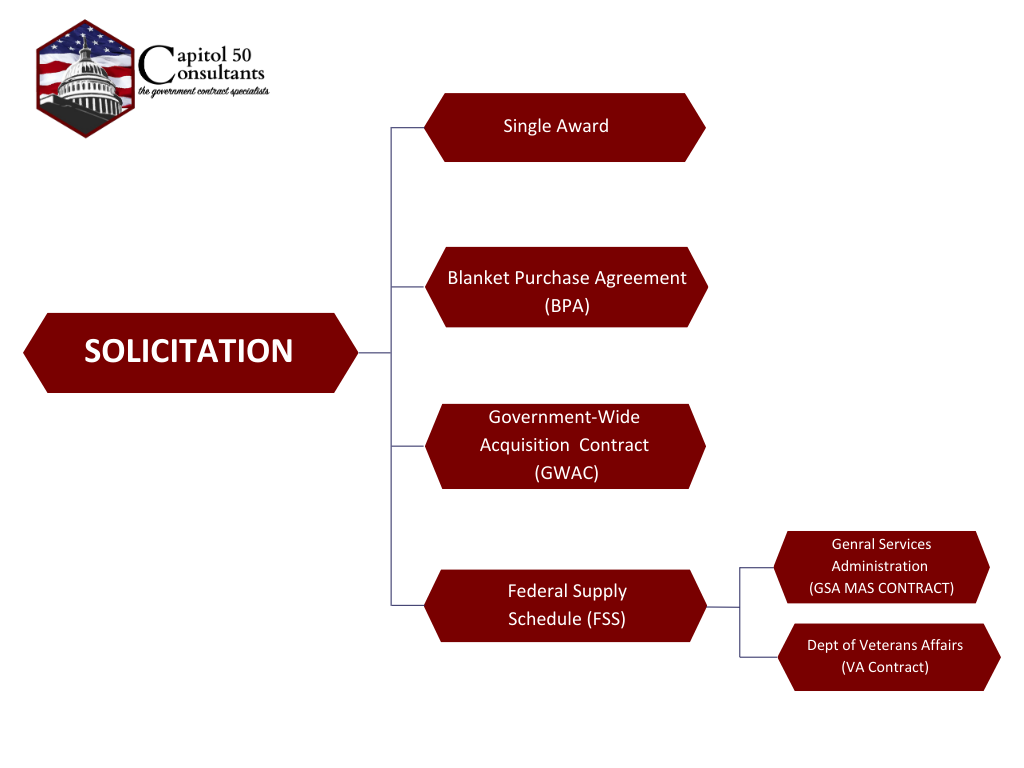Understanding Government Contract Vehicles
The first step to success in the public sector
A Single-Award contract is awarded through open solicitations such as Requests for Proposals (RFP), Requests for Quotes (RFQ), or Invitations for Bids (IVB) on SAM.gov. These contracts typically take around 180 days to complete and are above the simplified acquisition threshold of $250K. After contract completion, the seller must re-enter the process for future opportunities. Awards go to the lowest price technically acceptable bid.
Similar to Single-Award contracts but designed for multi-year use, BPAs have a base period and up to four option periods. They are exclusive between one buyer and one seller, with a ceiling value but no guaranteed purchases. Orders are placed only as needed.
GWACs are sought after for their flexibility. Unlike BPAs, they involve multiple buyers and sellers, and often have higher spending limits, sometimes into the billions, with longer contract durations.
The FSS is managed by both the GSA and VA. These contracts align with commercial purchases, meaning that the contracts are setup to mimic a “normal” purchase”. VA contracts are for medical products/services, while GSA contracts cover commercially available products/services.
These contracts act as a “license to sell” in the federal space and can last up to 10 years. They simplify procurement and offer flexibility for both small and large purchases, making them attractive to buyers especially below the simplified acquisition threshold or micro-purchase threshold ($10K).
Similar to VA contracts, GSA contracts provide a “license to sell” within the federal marketplace. Lasting up to 20 years, they streamline procurement and can be used for purchases below the simplified acquisition threshold or micro-purchase threshold ($10K). GSA contracts are widely utilized due to their efficiency and potential value.
